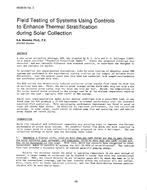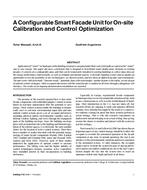Click here to purchase
Sheathing boards based on magnesium oxide (MgO) have been widely used in the Danish market during the years 2010-2015. However, it was realized that they have a strong affinity to absorb humidity from ambient air, which easily leads to leaking of corrosive salt water from the boards, moisture uptake in adjacent structural members and degradation of the boards themselves. Such boards have now been banned from use in the Danish market, while damage cases valuing around 300 million USD need to be reconciled. In the boards that were most often seen in the market, the binder was formed by chemical reaction between MgO and MgCl2. However, MgSO4 is an alternative offered by some manufacturers, and those boards may have such smaller moisture uptake that damages can be avoided. This paper gives an account of recent attempts to determine some characteristics of MgO boards, which are based either on chloride or sulfate. The investigations comprise: (1) Optical examination in microscope of thin sections for structure and composition, (2) Identification of elemental composition with X-ray Fluorescence (XRF) and Energy Dispersive X-ray (EDX), (3) Determination of moisture retention, including time evolution of moisture uptake and eventual sorption curve, (4) Determination of water vapor permeability, (5) Analysis of chemical composition of ions of leaked salty water with Inductively Coupled Plasma Optical Emission Spectrometry (ICP) and Ion Chromatograph (IC), (6) Corrosion test on zinc sheets, which are brought in contact with powder of MgO board, and (7) Qualitative and quantitative methods for use in the field to determine the chloride content.
Citation: Thermal Buildings XIV 2019
Product Details
- Published:
- 2019
- Number of Pages:
- 8
- Units of Measure:
- Dual
- File Size:
- 1 file , 2.1 MB
- Product Code(s):
- D-Bldgs19-018


